Other Resources
| There are a number of Web links worth knowing that do not fit conveniently into one of the other categories in this chapter (or otherwise do not merit their own category). Some of these links pertain to general Web development, and a number are specifically related to the technologies discussed in this book. Again, check the companion Web site for more current, descriptive, and complete listings. For your software needs, you might consider turning to the Linux Consultancy's list of PHP Editors, www.thelinuxconsultancy.co.uk/phpeditors.php (Figure C.16). They have noted practically every possible text editor you could use for PHP development. Readers can also submit reviews of a particular application and see what platforms are supported and at what cost. Figure C.16. If you need to find a new PHP text editor, this is the place to turn.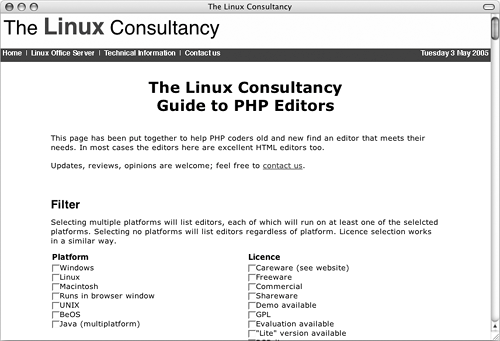 GeneralSourceForge, www.sourceforge.net, claims to be the world's largest repository of open source applications (and there's good cause to believe that). Thousands of different technologies are developed through and hosted by SourceForge (Figure C.17). Figure C.17. SourceForge is the home to nearly 100,000 open source projects.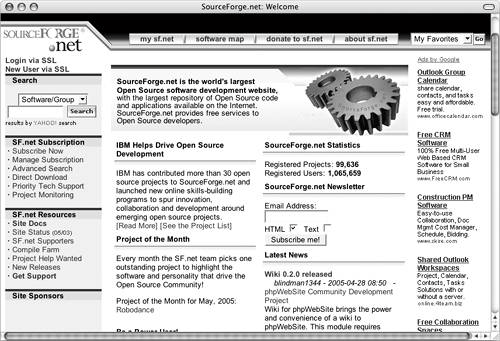 Web developmentDeveloper Shed, www.devshed.com, is a general Web development site that includes articles discussing the various programming languages and technologies you are likely to use. These include PHP, Apache, and security. WebMonkey, www.webmonkey.com, is very similar to DevShed, although it is broader in scope. Spoono, www.spoono.com (Figure C.18), covers many aspects of developing Web sites, from graphic design to programming to HTML and JavaScript. Figure C.18. The hip and useful Spoono.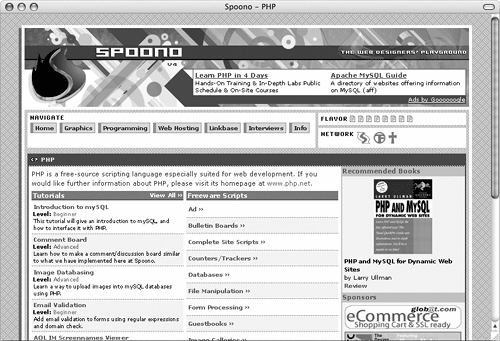 (X)HTMLThe obvious resource for HTML concerns is the World Wide Web Consortium's home page, www.w3.org (Figure C.19), as they supervise the language. The site has loads of information but can be too technical. After that, you should also consider some of the resources I've previously listed, including W3Schools.com, WebMonkey.com, and DevShed.com. Figure C.19. The W3C site lists all HTML specifications.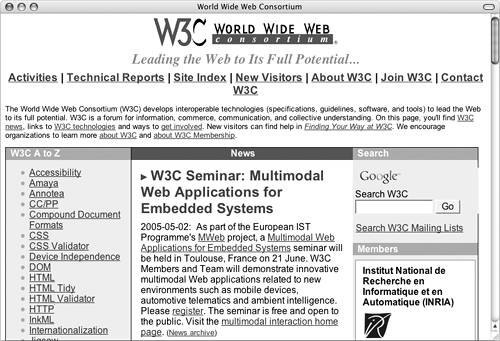 There are several HTML-validation applications available online, which are free to use. These will tell youeven with PHP-generated pagesif a page has any problems. The two best free validators are the W3C's (http://validator.w3.org) and WebXACT (http://webxact.watchfire.com). The former focuses on adherence to standards, while the later is geared toward accessibility. UseIt.com, www.useit.com, is Jakob Nielsen's Web site for discussing Web usability. Nielsen, who has written books on the subject, presents numerous do's and don'ts for Web development (Figure C.20). Figure C.20. Jakob Nielsen is one of the leaders of Web usability ideology.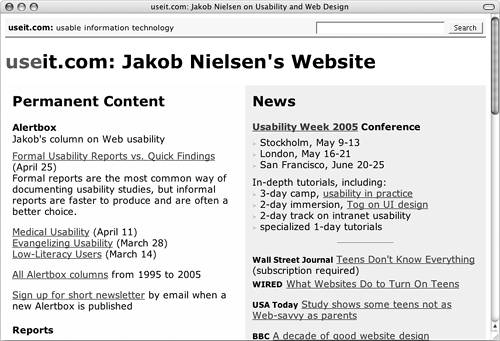 CSSI use CSS (Cascading Style Sheets) in a couple of this book's examples but did not have the space to discuss the concept in detail. One of the great things about CSS is that you can use any number of freely available templates for your projects without a complete knowledge of how CSS works. Start by perusing and using the templates available at these sites:
Once you've piqued your interest, begin really learning CSS online at
JavaScriptIn my opinion, JavaScript resources on the Web tend to be inconsistent. You'll frequently need to peruse several just to find the information you are looking for. When the need arises, I recommend starting with
As always, you may have the best luck by performing searches using Google, Yahoo!, or the like. Apache Web serverBecause the Apache Web server is the most popular server in use, especially on non-Windows operating systems, it's no surprise that there are several Web sites dedicated to the software. After you've read everything at Apache's home page, http://httpd.apache.org (Figure C.21), go to Apache Week, www.apacheweek.com, and Apache Today, www.apachetoday.com. Figure C.21. The home page for the Apache Web server.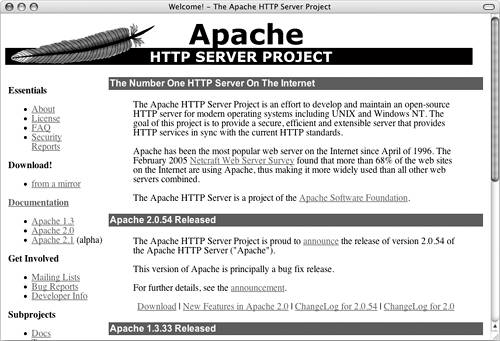 |
EAN: 2147483647
Pages: 166